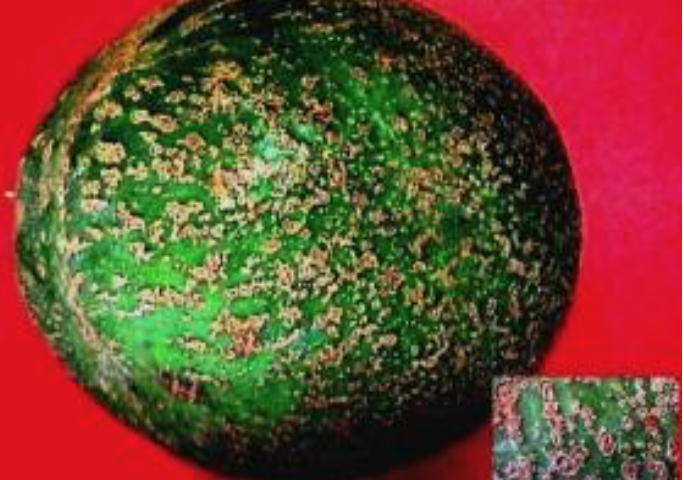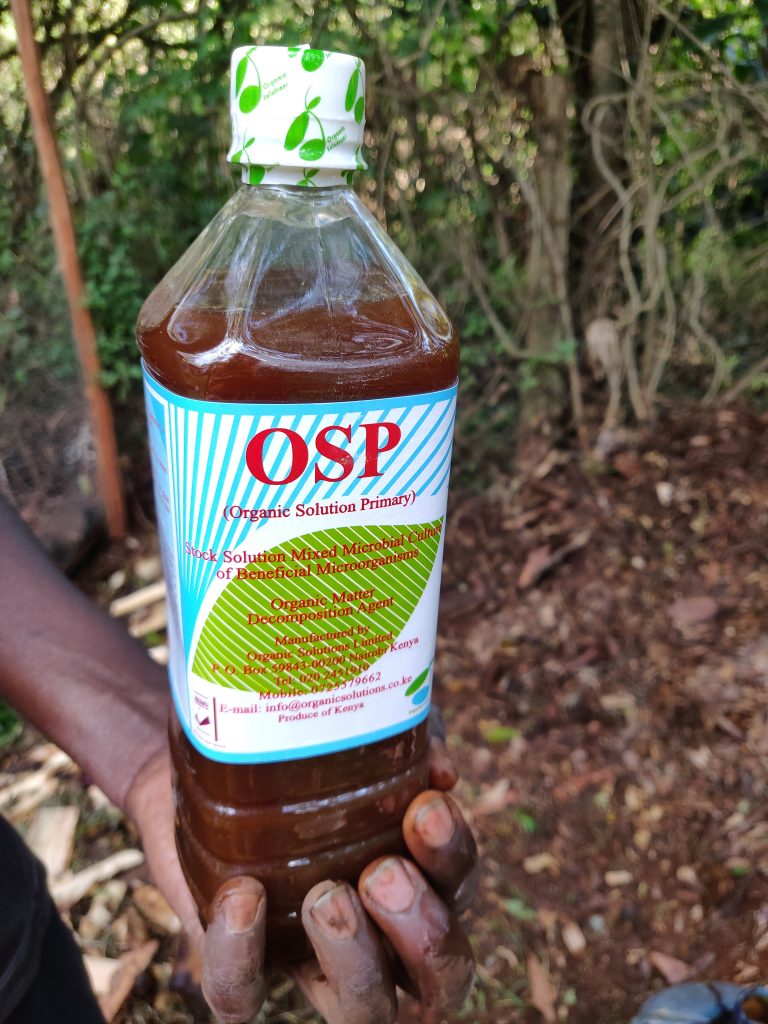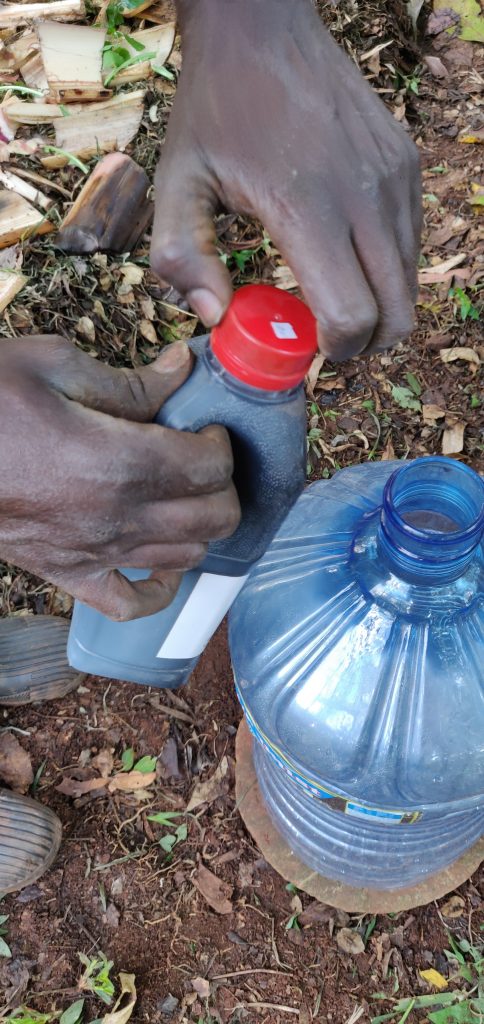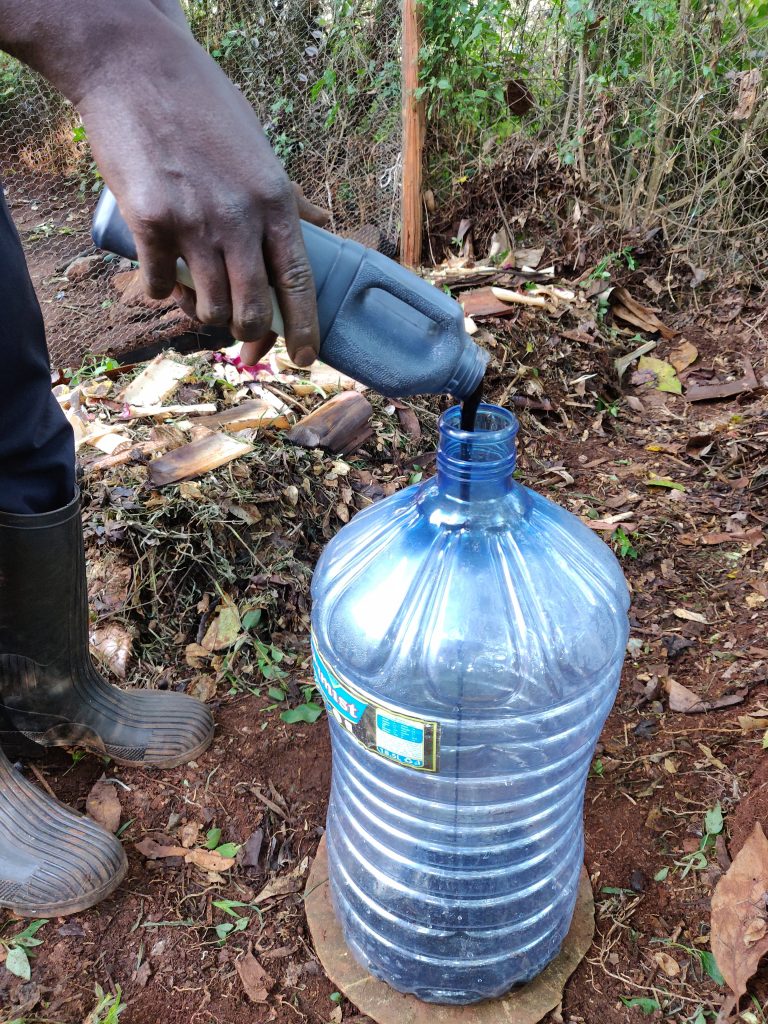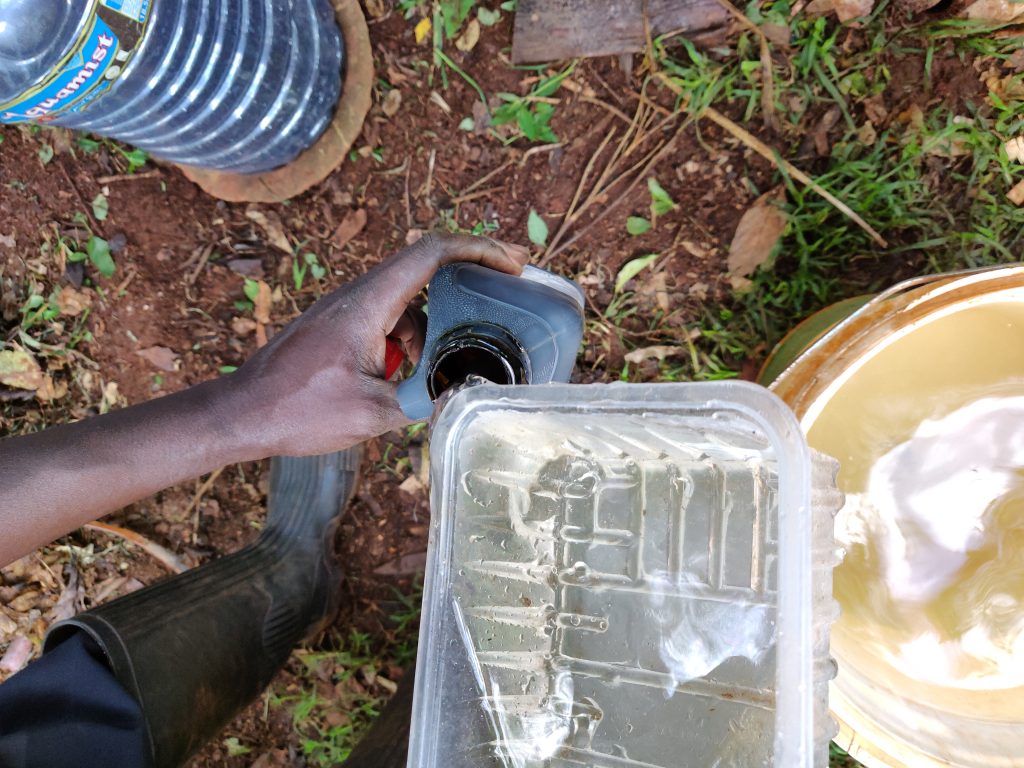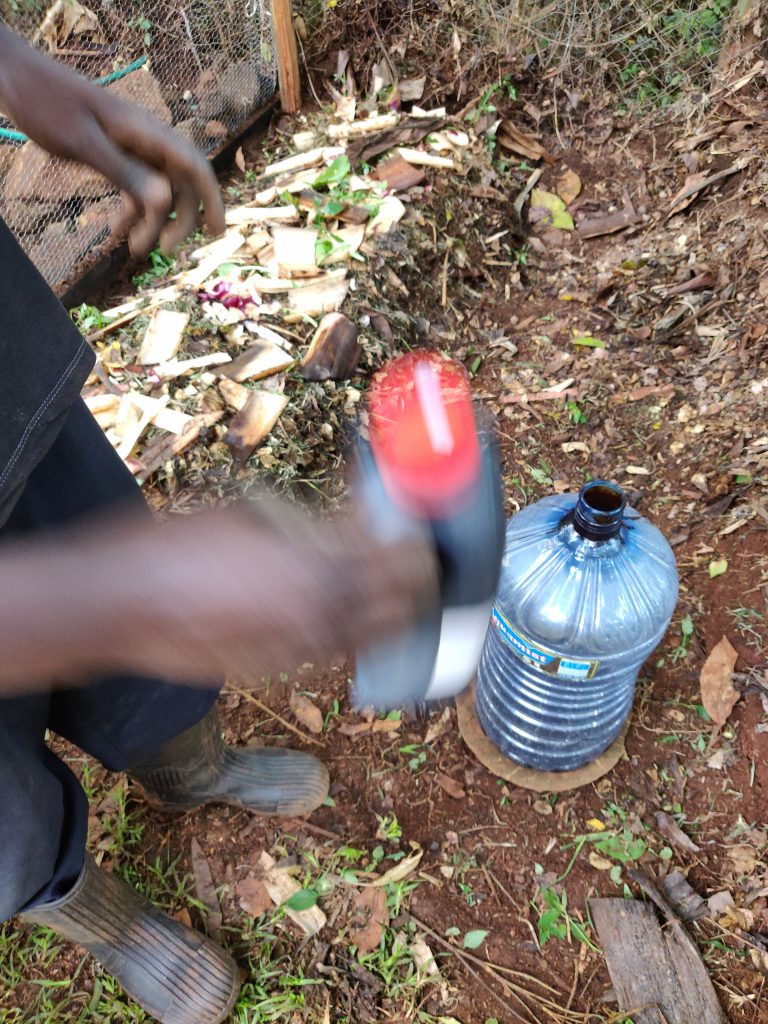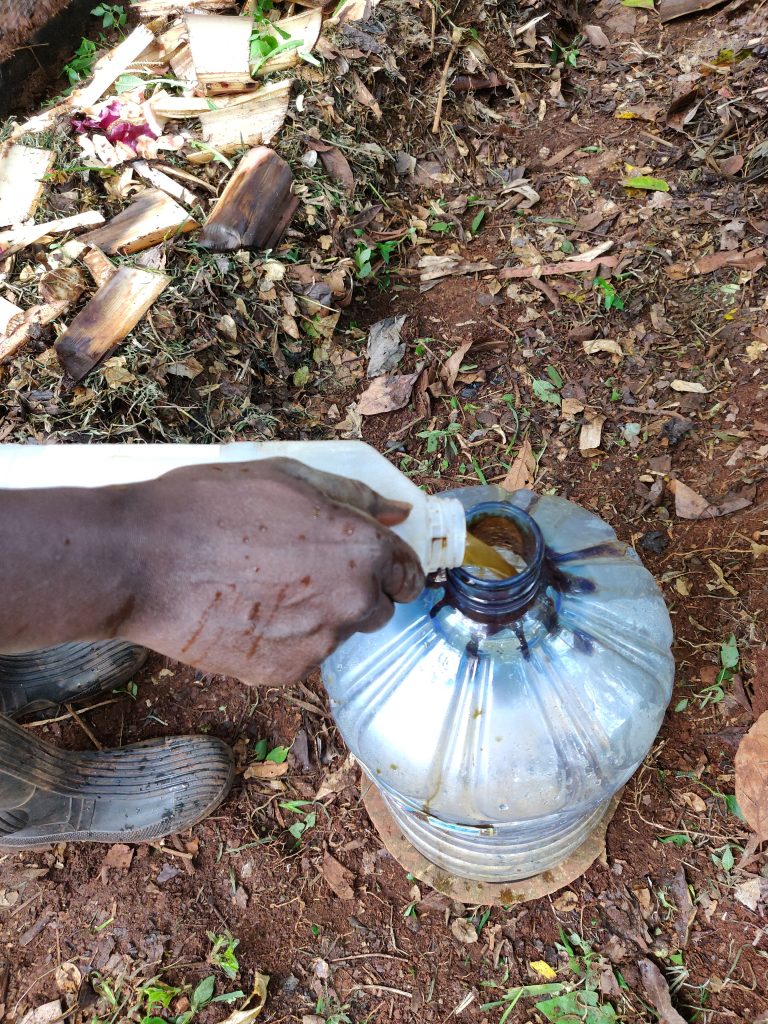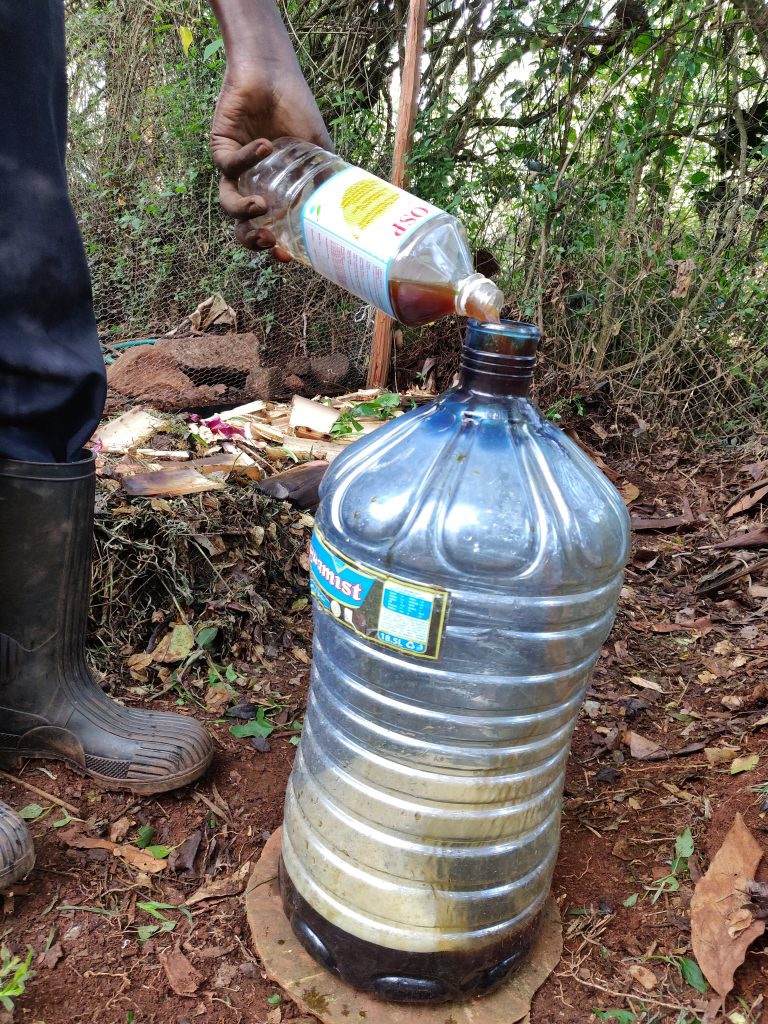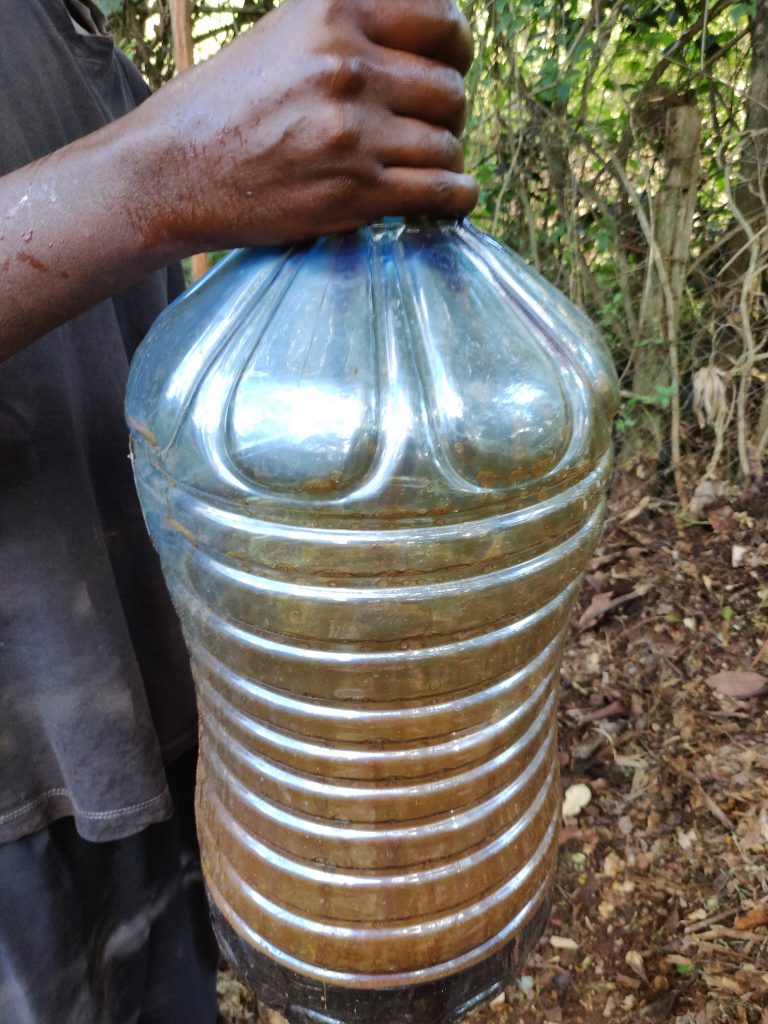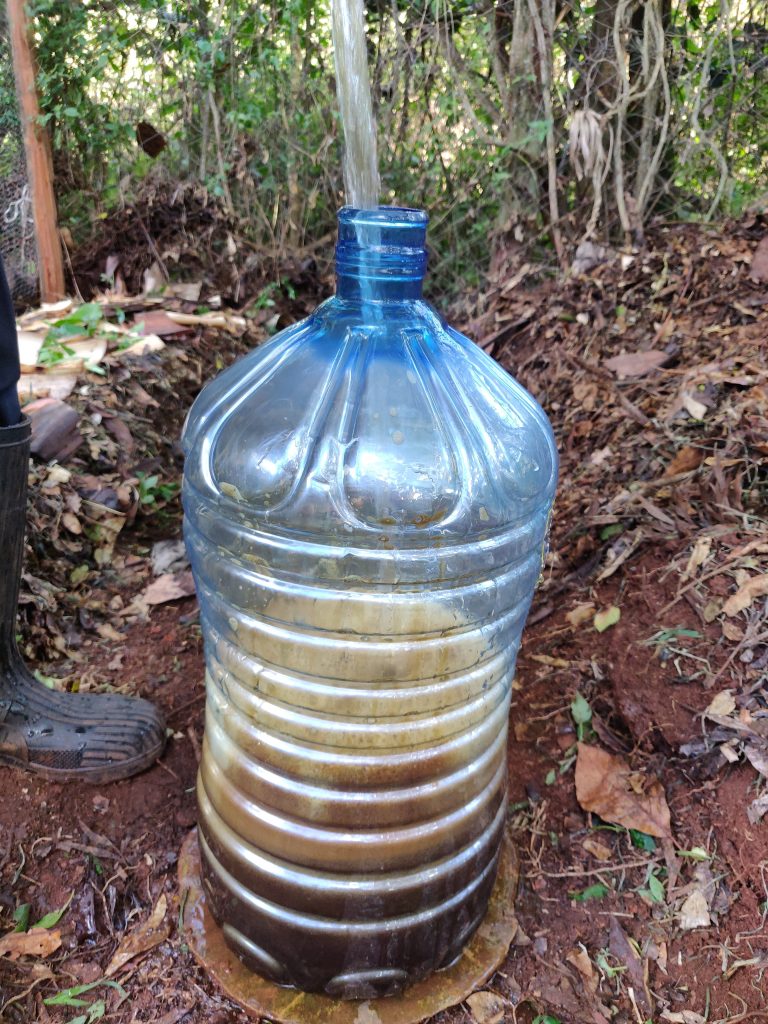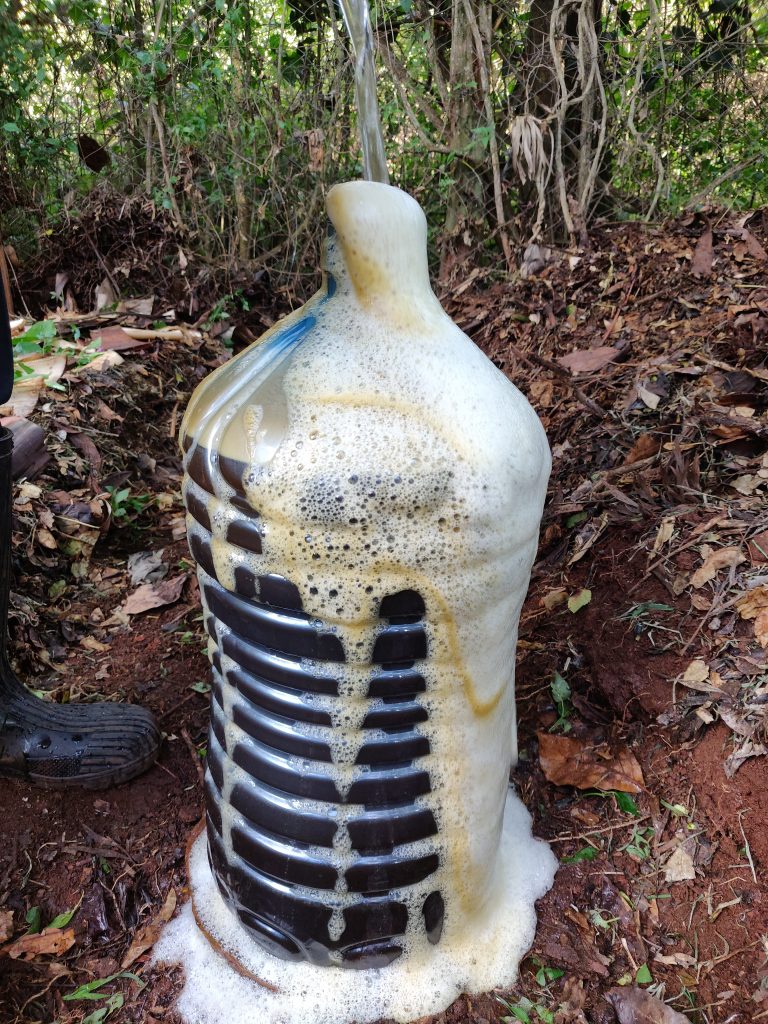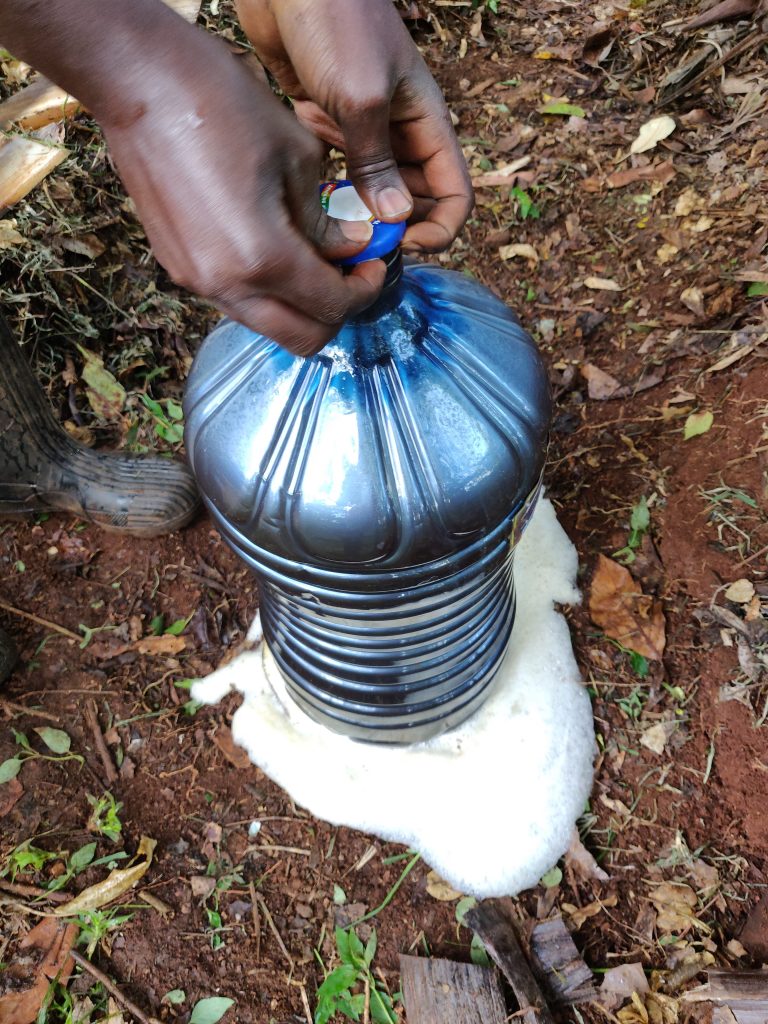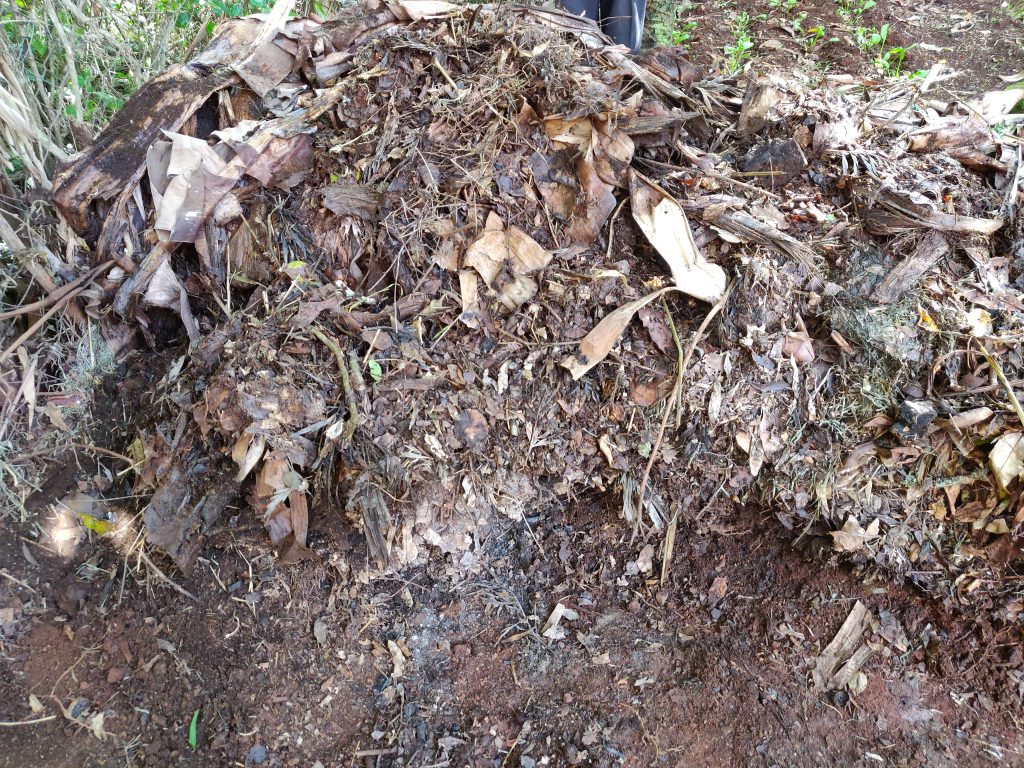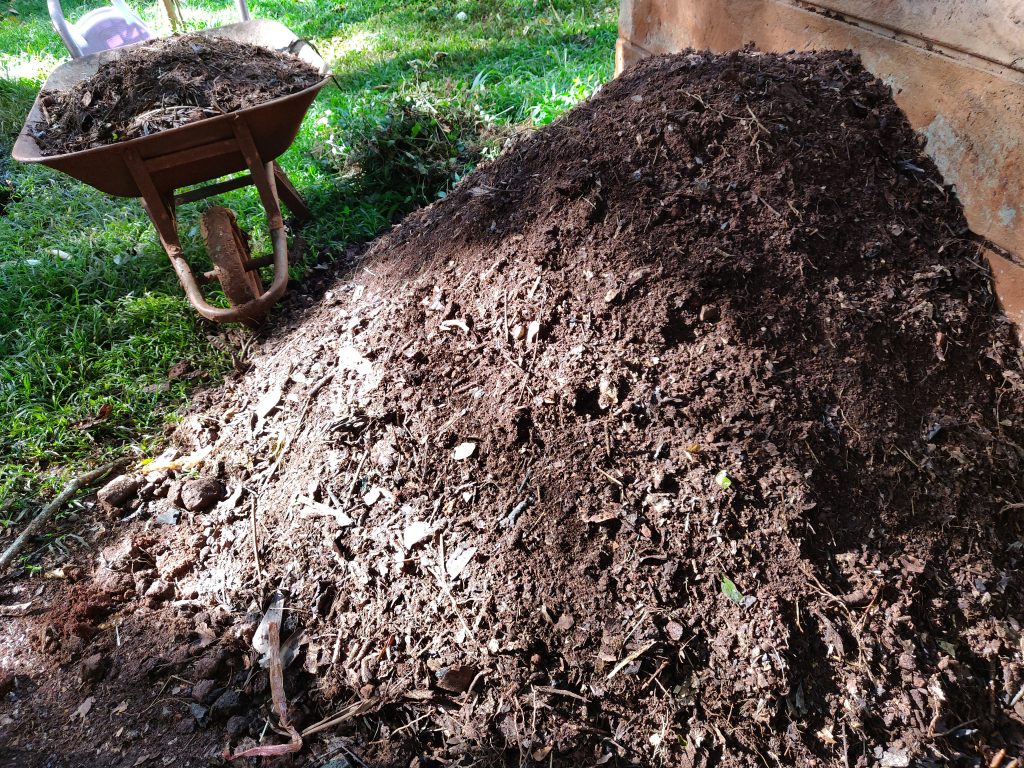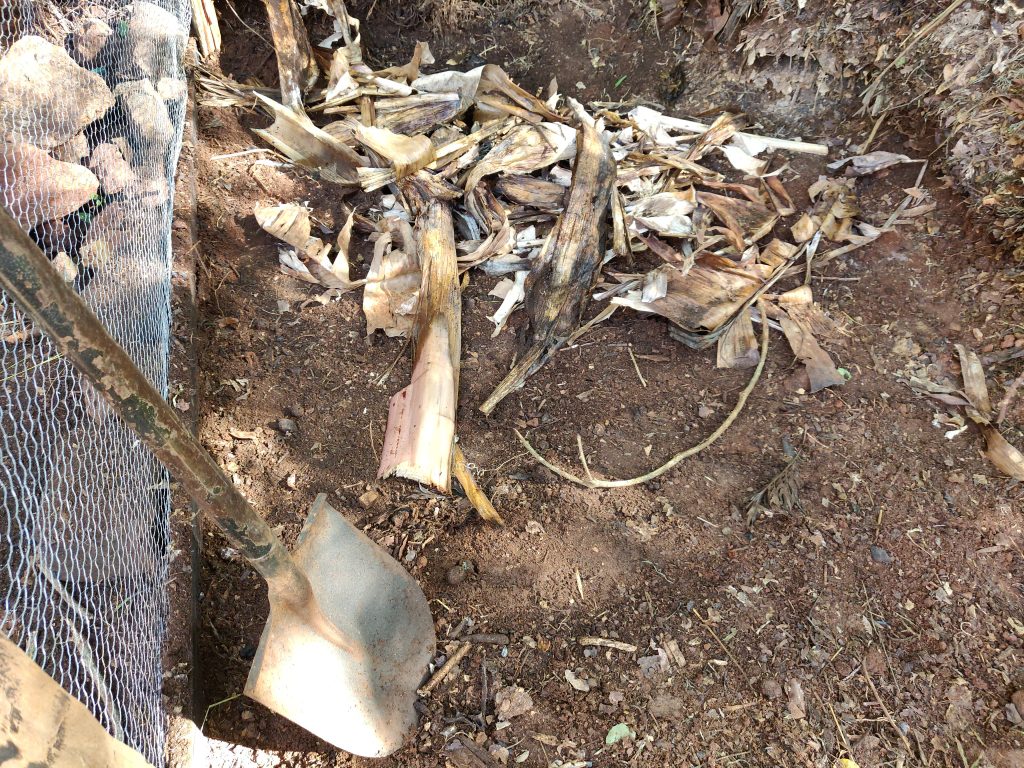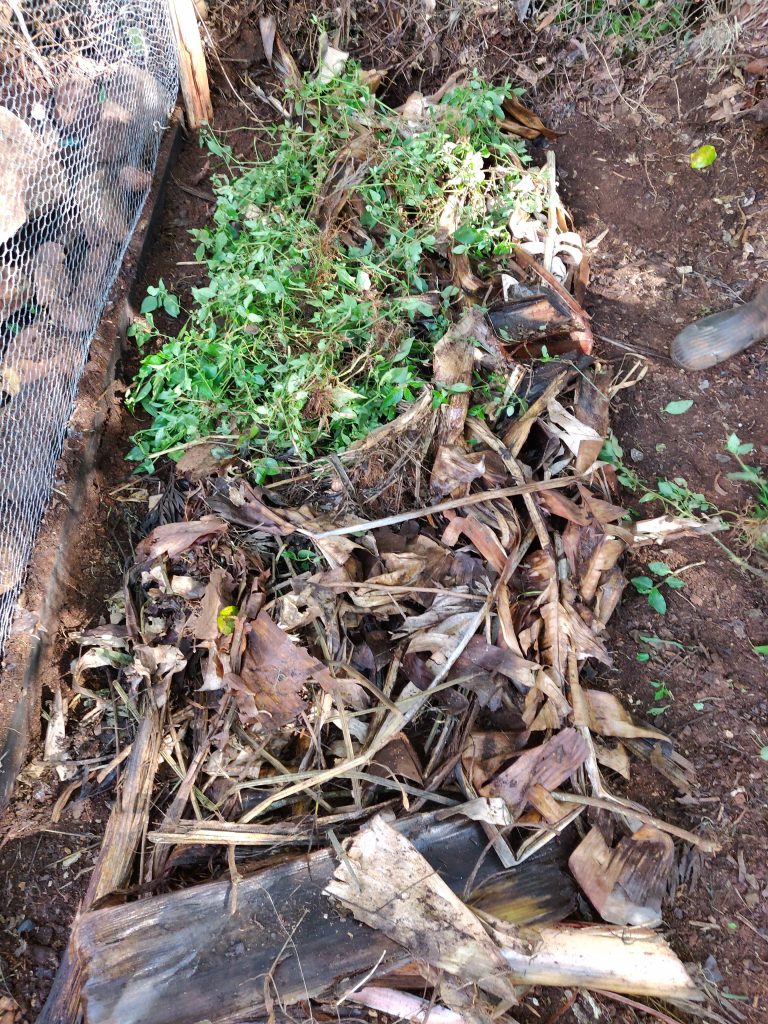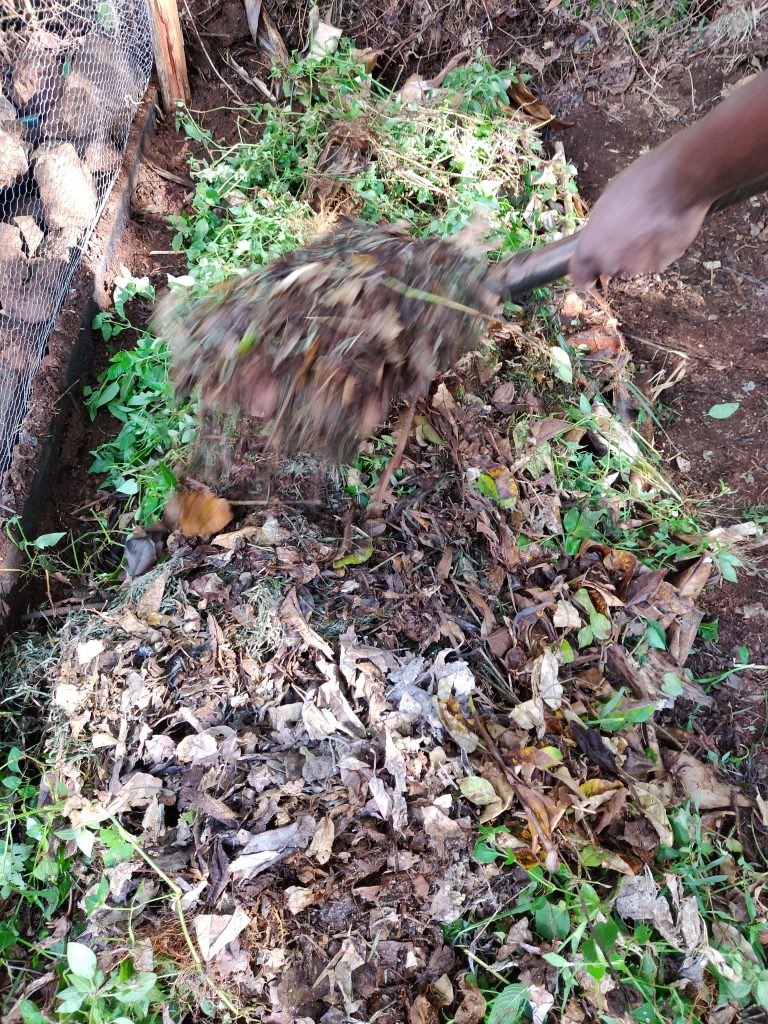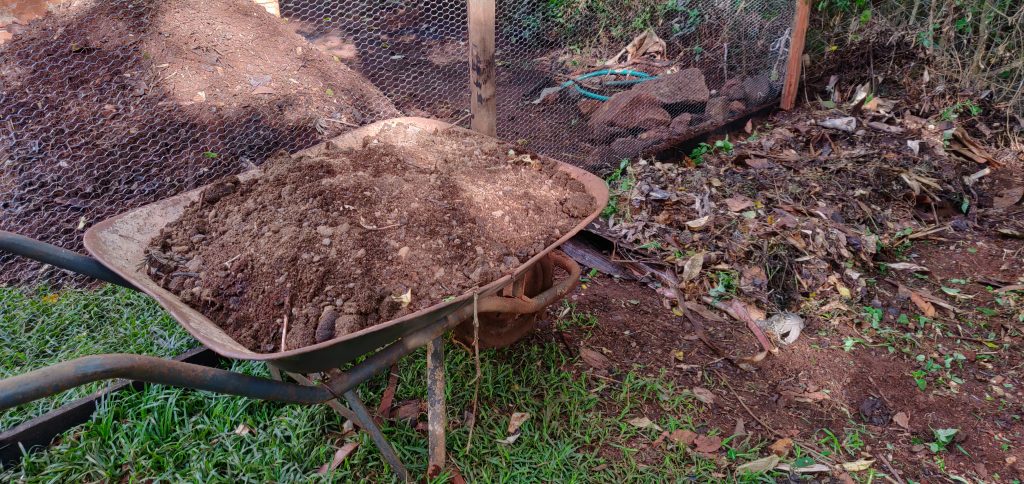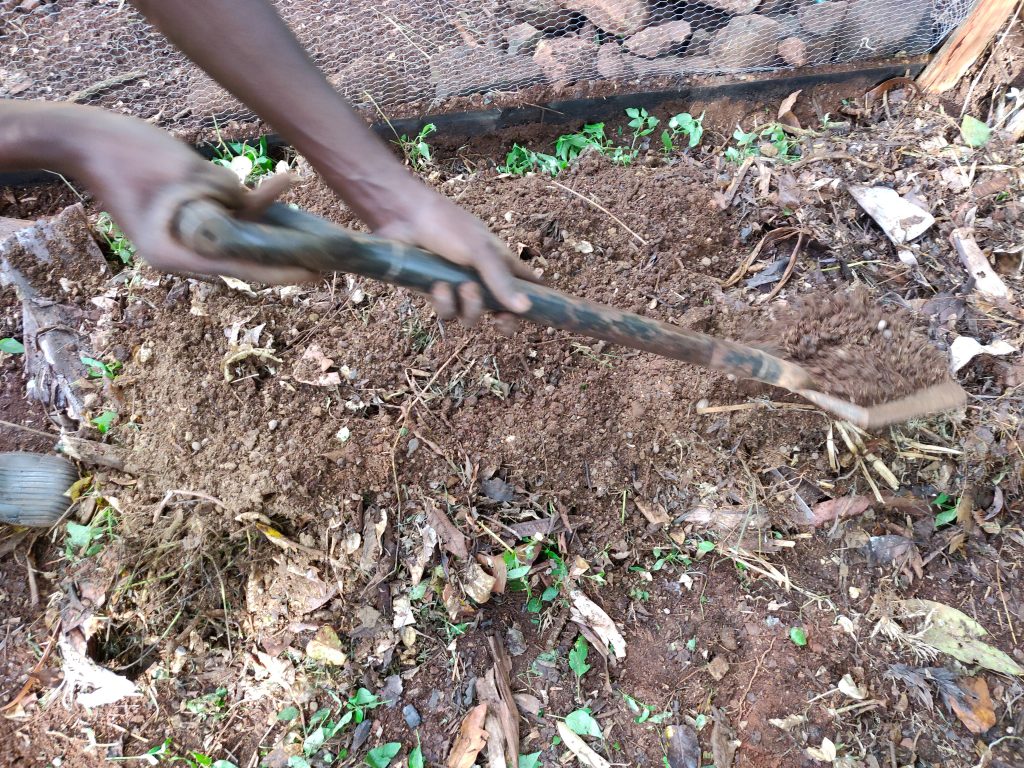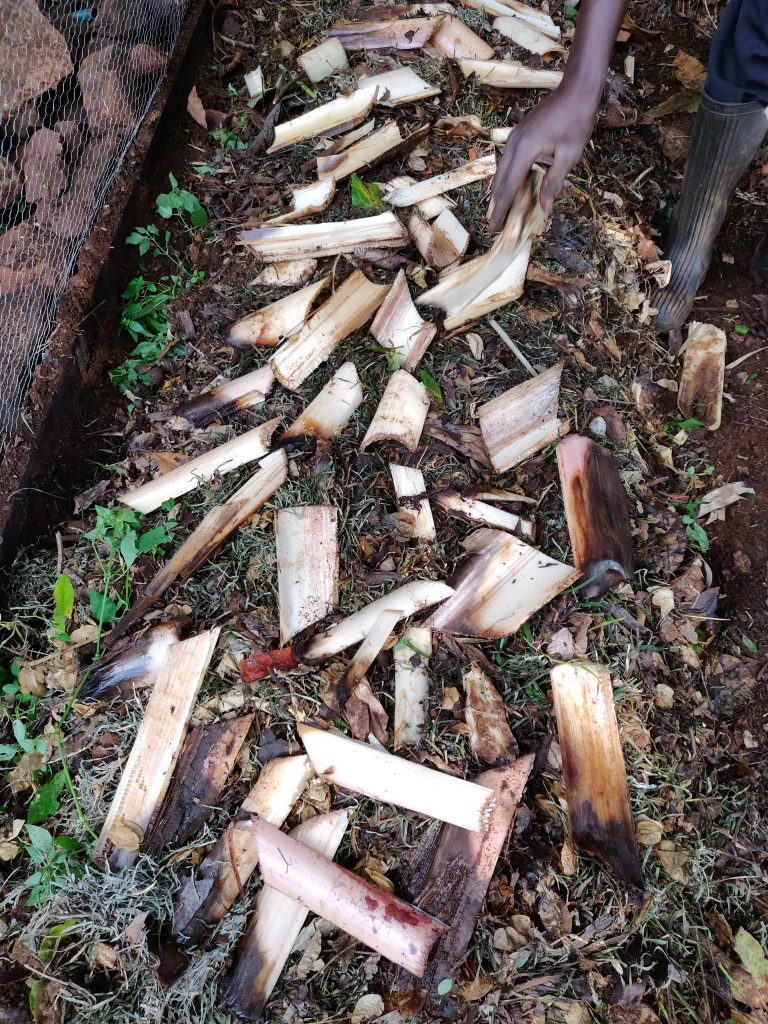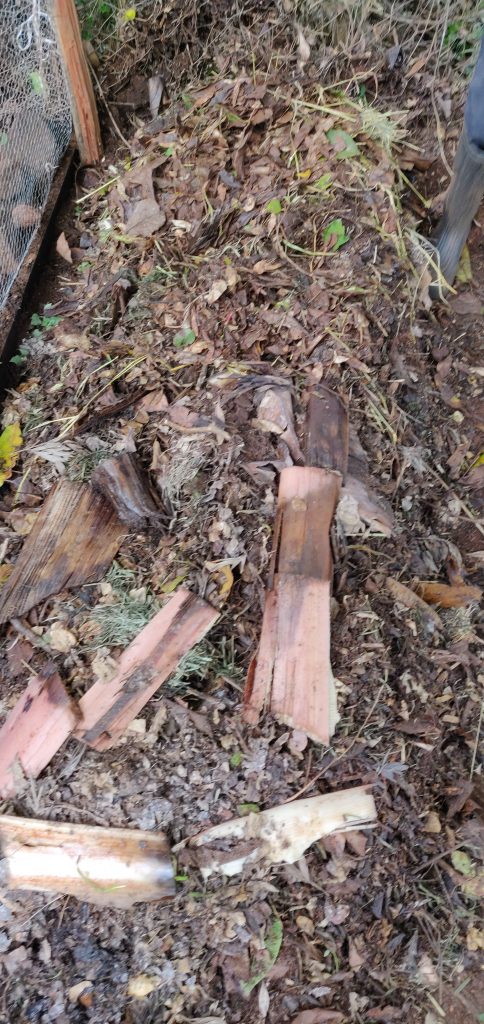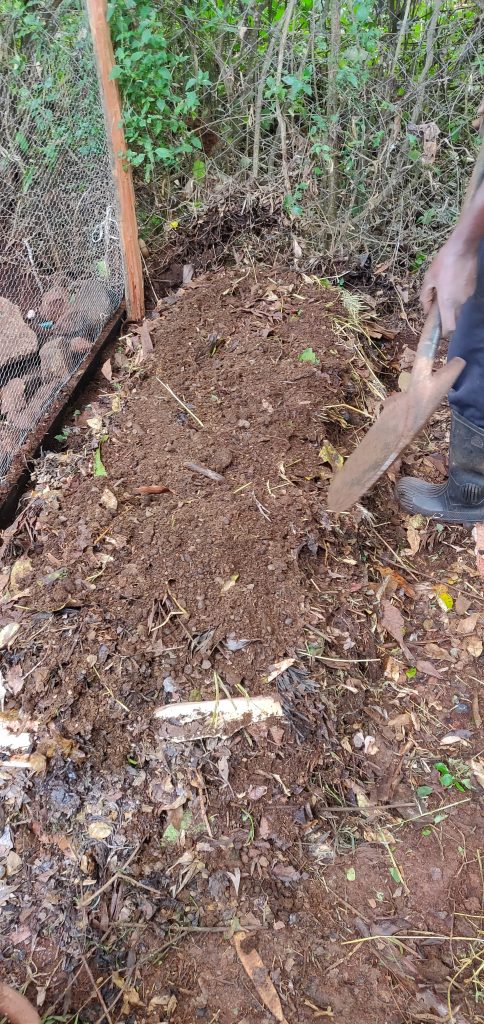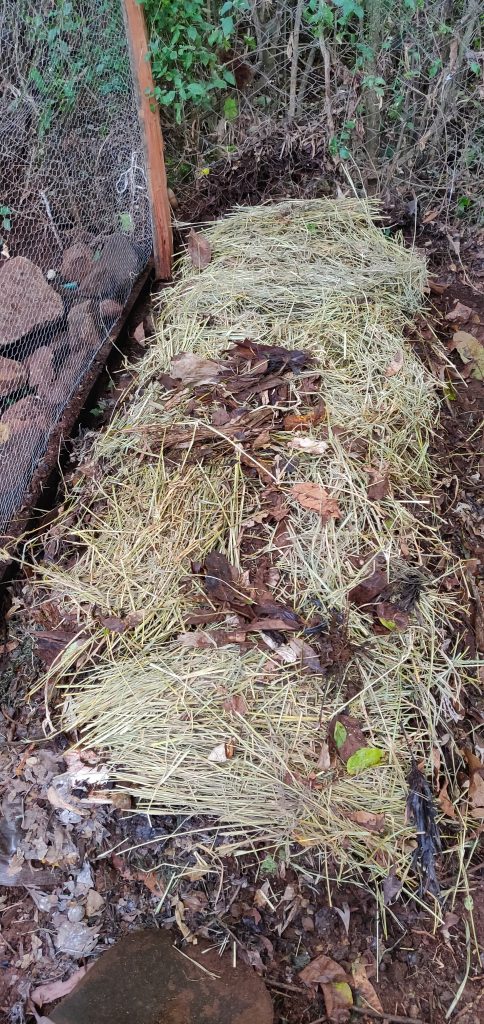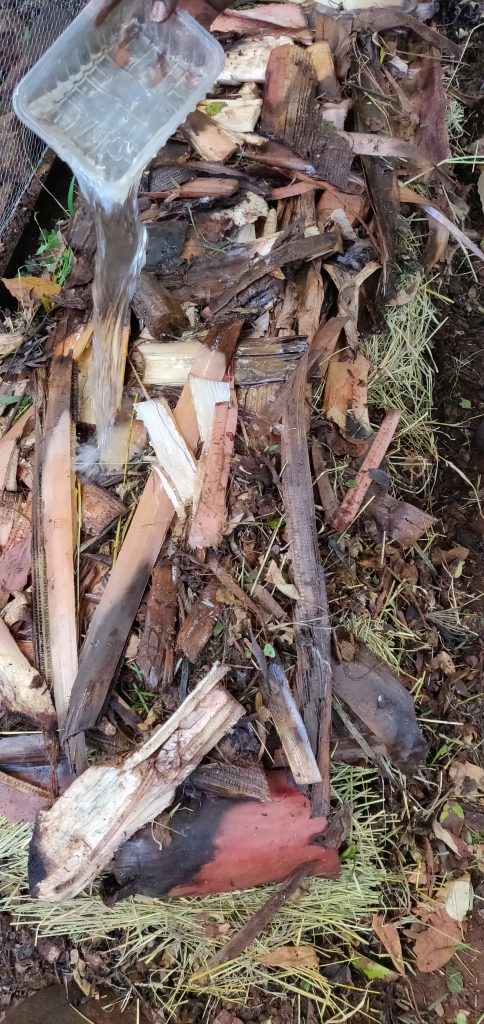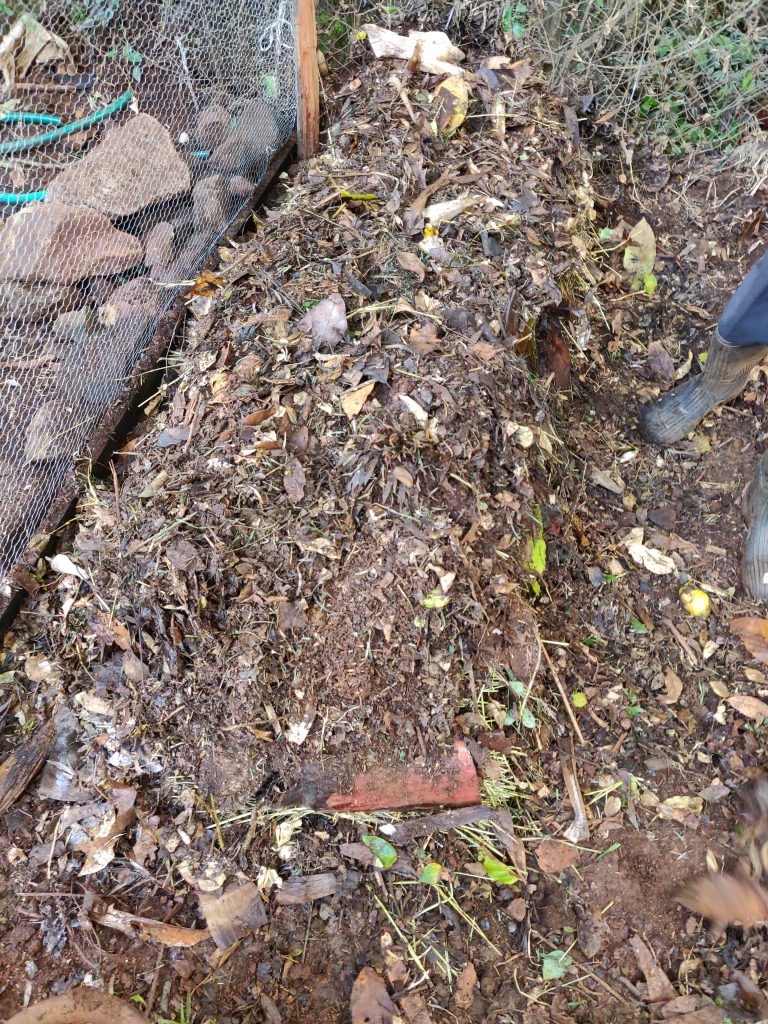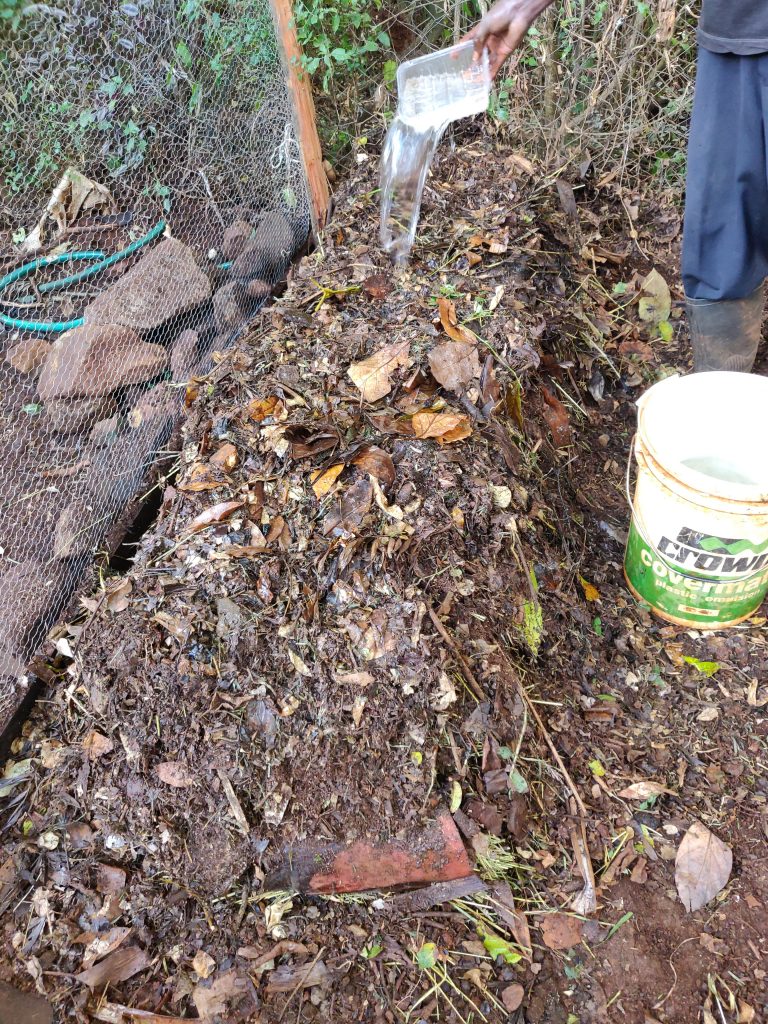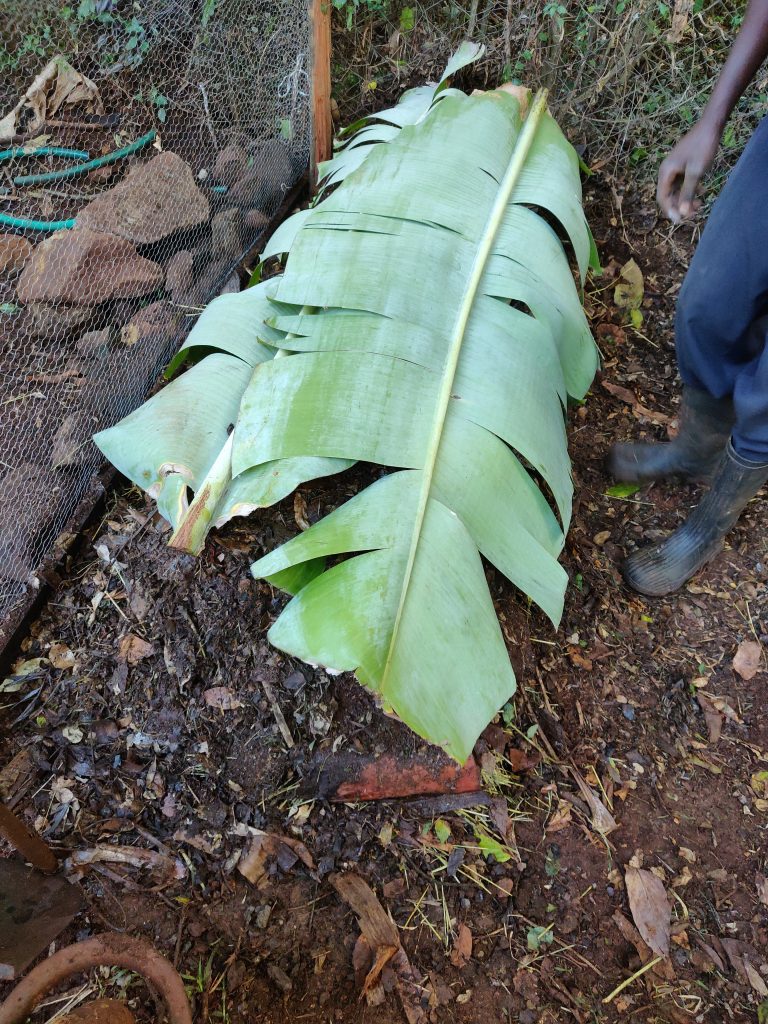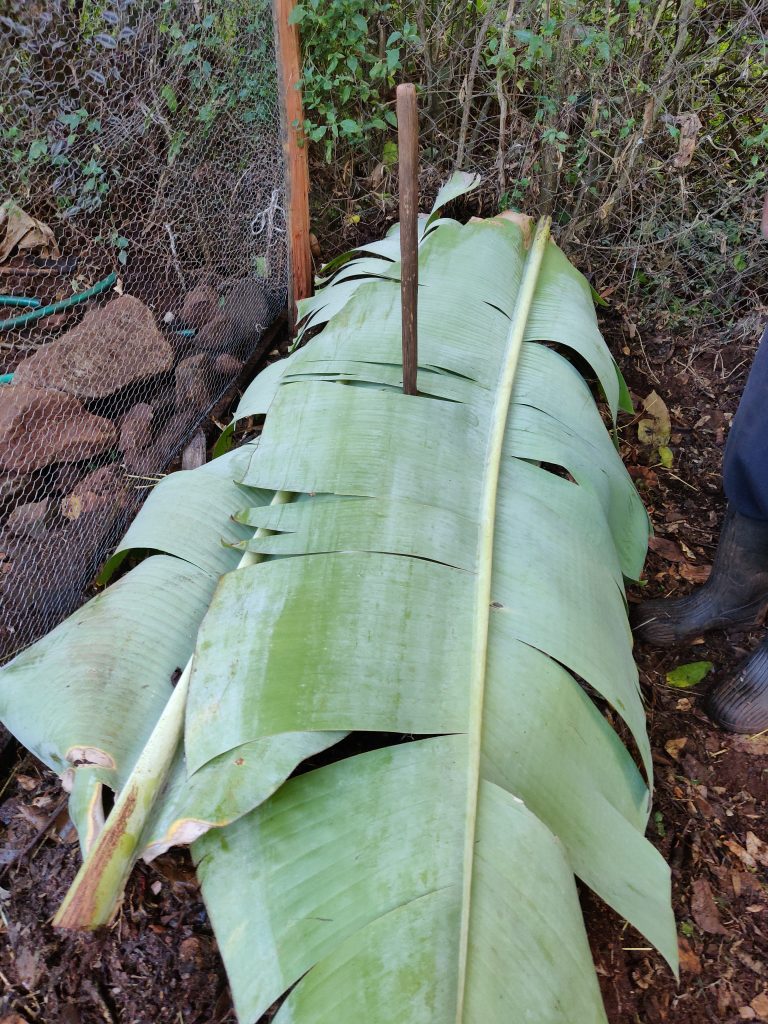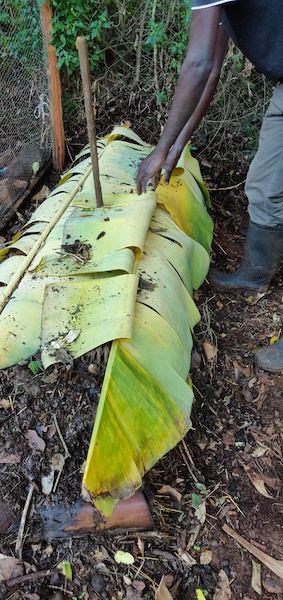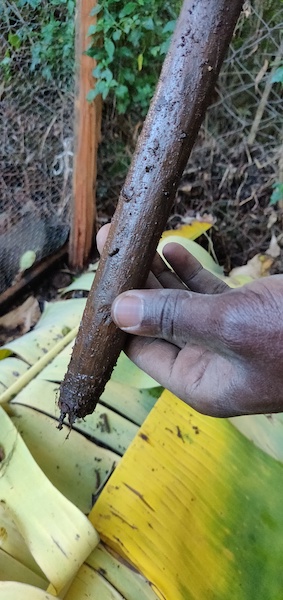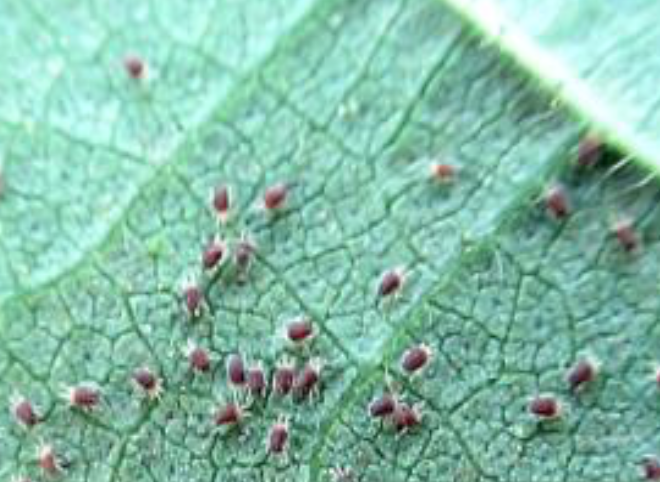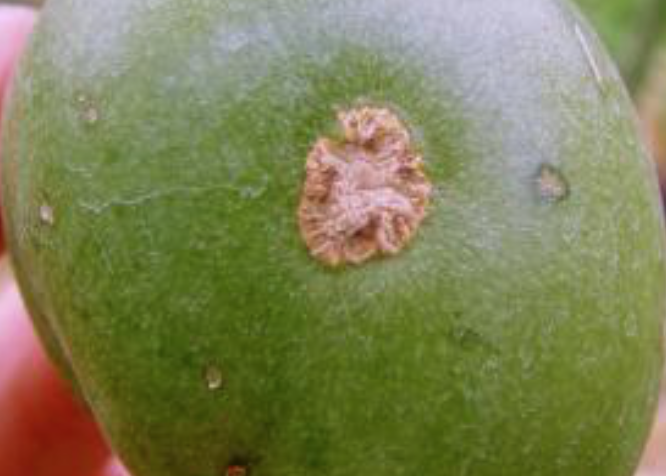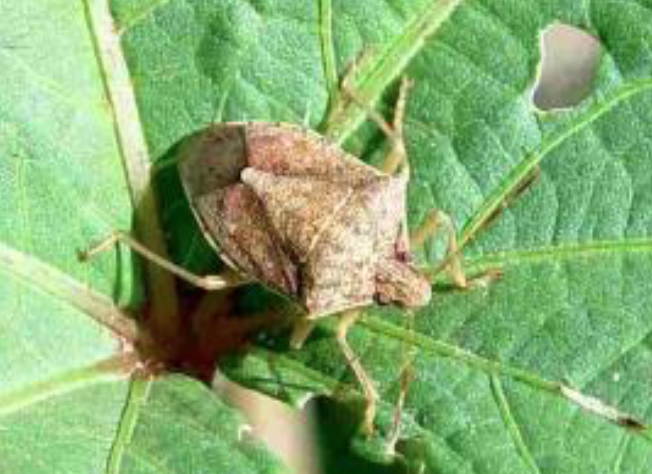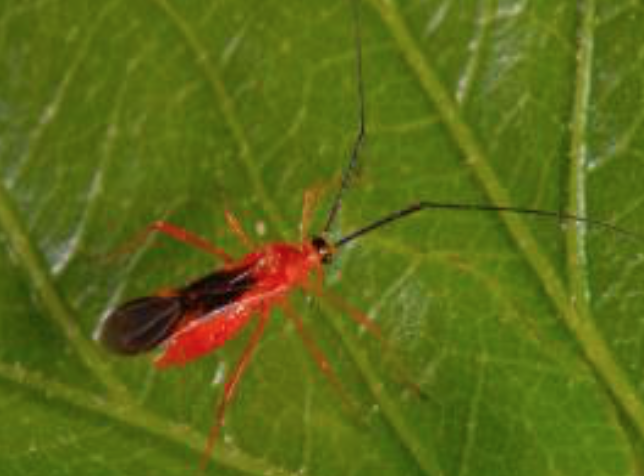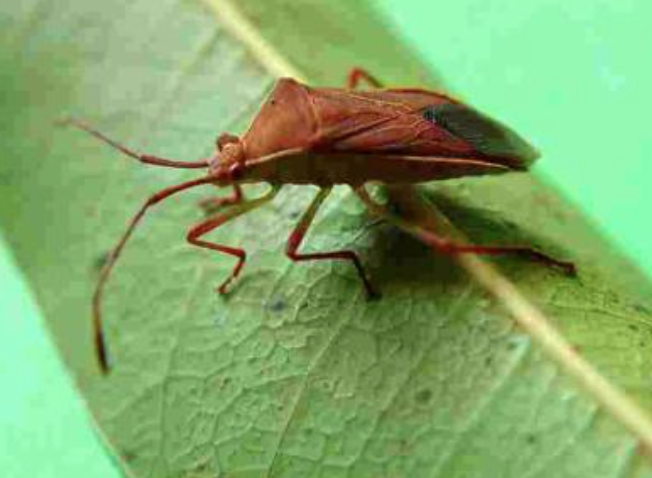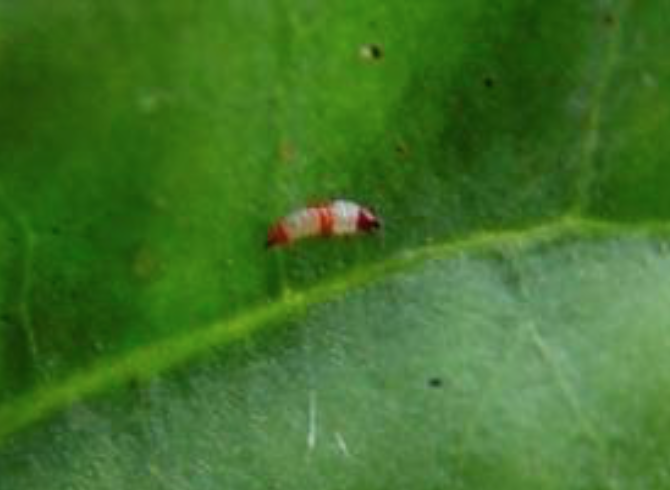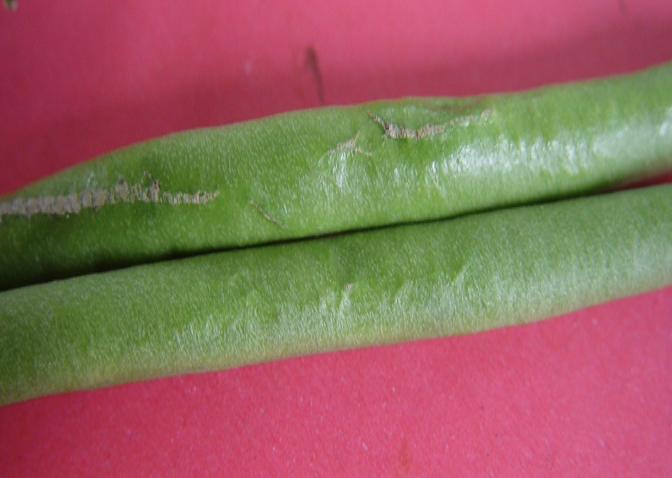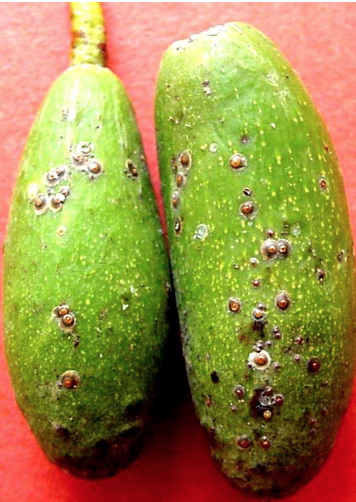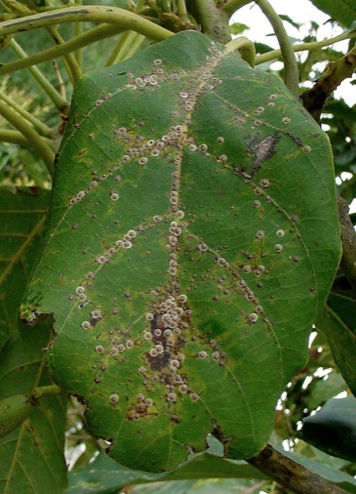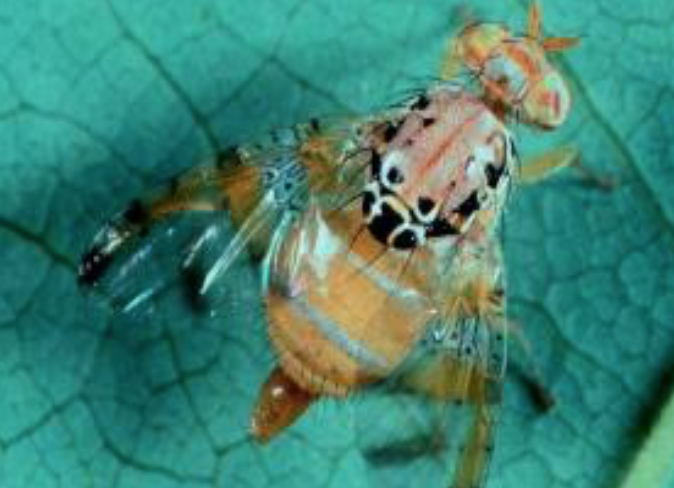Avocado root rot (Phytophthora cinnamomi)
Credit: Biovision-Infonet
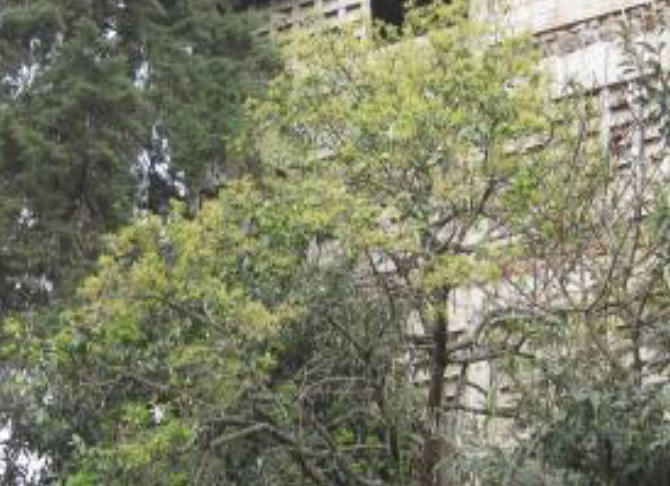
(c) A.A. Seif, icipe
This disease can attack trees of any size and age. Leaves of infected trees are small, usually pale or yellow green, are often wilted and fall prematurely giving the tree sparse appearance. In advanced stages of the disease, branches die-back and fruit remains small and crop yield drastically reduced. Feeder roots get blackened, decayed and died. Infected trees die prematurely. The disease is prone in areas subject to flooding and in poorly drained soils. The fungus can be spread or introduced to new areas by use of infected seeds, infested soil, irrigation water containing spores of the fungus and infected seedlings. The host range of the fungus includes Acacia, Camellia, Casuarina, Cypress, Eucalyptus and Grevillea.
What to do:
- Use diseased-free seed.
- Treat seed for planting in a hot-water bath at 48 to 50 degree Celsius for 20 minutes. After the hot-water treatment, rinse the seed immediately with clean, cold running water and spread out to dry thoroughly on a clean surface not in contact with the soil.
- Use clean nursery soil for container-grown plants. The soil should be well drained and carefully irrigated to prevent excessive moisture. Use tolerant/resistant rootstocks (e.g. “Duke No. 6” and “7”; “G 6”).
- Remove diseased trees from the field.
- Avoid movement of soil or water from diseased to noninfested areas.
- Use cultivation equipment first in healthy portion of the orchard before use in diseased areas. Washed and dry cultivation equipment after use in diseased areas.
